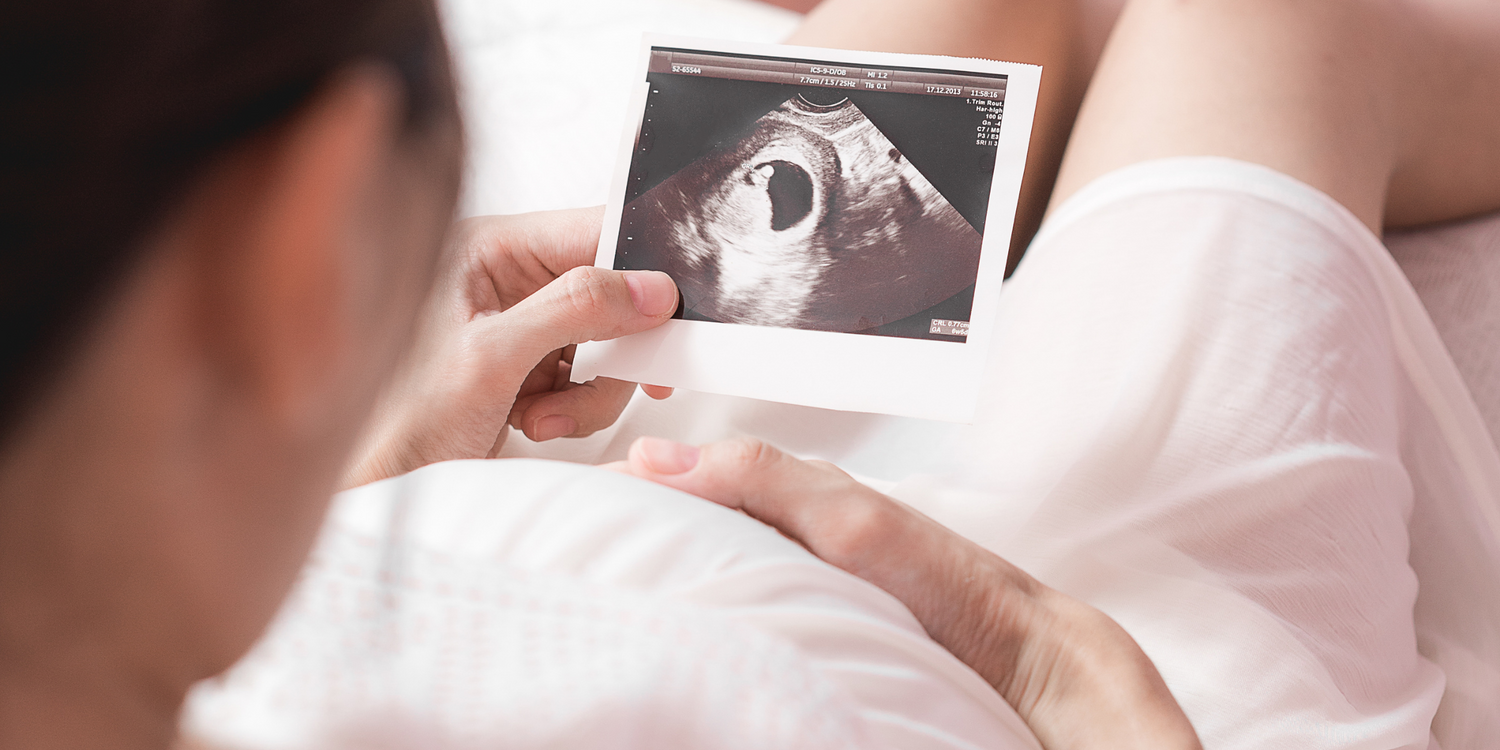Key Takeaways
- Can you hardly wait to find out the sex of your baby?
- Find out here when the ultrasound can give you the first clues, what biological processes are behind it and why legal regulations ensure that this information is communicated to you responsibly.
- Let yourself be surprised how this exciting phase develops and enjoy the unique moment when you are finally told the sex of your little miracle.
Are you one of the many expectant parents eagerly waiting to learn your baby’s gender? This question is on the minds of many pregnant women, and you're not alone. Gender determination through ultrasound is an important part of prenatal care, but the timing is key.
From the 11th week of pregnancy, early signs of your baby's gender can become visible, but reliable results usually come later. This article explains exactly when gender can be detected, the biological processes involved, and the legal guidelines around gender determination. You’ll also learn which factors can affect visibility in the ultrasound.
When is the Baby’s Gender Determined?
Your baby's biological gender is determined at the moment of conception, through a fascinating chromosomal process.
Chromosomal Determination at Conception
Nature has a precise mechanism for determining gender. While the egg always contains an X chromosome, sperm carry either an X or a Y chromosome, resulting in two possible combinations:
- XX Combination: Development of a biological girl
- XY Combination: Development of a biological boy
Interestingly, Y-chromosome sperm are faster but have shorter lifespans compared to X-chromosome sperm.
Development of the Genital Organs From the 7th Week
Until the 7th week, the genital organs are identical in all embryos. After that, the SRY gene on the Y chromosome is activated in male embryos, initiating the development of male characteristics. Without this gene, female embryos develop ovaries and other female reproductive organs.
Statistical Distribution of Boys and Girls
Nature shows a slight tendency toward male births. Statistically, about 1,055 boys are born for every 1,000 girls. Seasonal factors also play a role: the chance of conceiving a boy is higher in the fall, while in spring, the chance of conceiving a girl increases. Statistically, most boys are born in May (1,061 boys per 1,000 girls), while November shows the most balanced ratio (1,047 boys per 1,000 girls).
When is the Gender Visible on Ultrasound?
With today’s advanced ultrasound technology, you can get a fascinating glimpse into your baby’s development. But when exactly can you see your baby’s gender?
First Signs From the 11th-12th Week
Around the 11th week, your baby’s external genitalia develop enough for early signs to theoretically be visible. Experts call this the “nub theory,” which can offer initial clues. However, the accuracy of this method varies significantly:
- 11th week: 48% accuracy
- 13th week: 91% accuracy
- 14th week: 94% accuracy
Reliable Determination From the 14th-16th Week
A reliable determination is typically possible from the 14th week. At this stage, your baby’s external genitalia are more defined. However, the highest accuracy is usually achieved during the second major ultrasound between the 19th and 22nd weeks. Experienced obstetricians can then recognize the gender with high reliability.
Factors Affecting Visibility
The visibility of your baby’s gender depends on various factors:
- Baby’s position – Sometimes, your baby may be positioned behind their legs or facing the wrong way.
- Ultrasound quality and the technician's experience – These play a significant role in the accuracy of the determination.
Important to note: Even under ideal conditions with experienced doctors, a small margin of uncertainty remains. Absolute certainty of your baby’s gender only comes at birth. In some cases, a secure determination may not be possible until the 19th-22nd week.
The quality of the ultrasound can also be influenced by the amount of amniotic fluid and the thickness of the abdominal wall. The more amniotic fluid and the thinner the abdominal wall, the better the visibility for your doctor.
Legal Regulations on Gender Determination
In Germany, disclosing the gender of your unborn child is subject to strict legal regulations, an important part of prenatal care designed to protect the unborn life.
Prohibition of Disclosure Before the 14th Week
Germany's Genetic Diagnostics Act (GenDG) sets clear boundaries: doctors may only disclose your baby’s gender after the 14th week of pregnancy. This applies even if the gender is visible earlier or determined through a non-invasive prenatal test (NIPT).
Reasons for This Regulation
The main purpose of this law is to protect unborn life and prevent gender-selective abortions. While this issue is rare in Germany, it is significant in some countries with particular cultural or societal norms, such as:
- Countries with a one-child policy
- Regions where sons are traditionally preferred
- Societies with high dowry costs for daughters
Exceptions for Medical Necessity
Genetic testing is permitted earlier under specific medical conditions. The law allows early tests in the following cases:
- Medical purposes: Genetic tests are allowed if they benefit the child’s health.
- Chromosomal abnormalities: Early tests are permitted for detecting trisomies.
- Health risks: Special tests are allowed if there is a suspicion of sex-linked inherited diseases.
Even if the gender becomes identifiable during these tests, the information may only be disclosed after the 14th week. While lab results may be available sooner, doctors are legally required to withhold this information.
Important: Genetic tests conducted solely to determine gender or to identify conditions that appear only after age 18 are strictly prohibited. This rule reinforces the responsible approach to prenatal diagnostics in Germany.
Germany’s Pregnancy Conflict Act complements these regulations by requiring comprehensive counseling in cases of abnormal findings, ensuring you, as an expectant mother, receive all the information and support necessary to make informed decisions.
Conclusion
Your baby’s development and the determination of its gender follow a fascinating biological timeline. While gender is genetically set at conception, visible features develop gradually—from initial signs in the 11th week to reliable identification from the 14th week. Modern ultrasound technology offers a unique view of this development, though factors like your baby’s position and ultrasound quality may impact visibility.
Germany’s legal regulations ensure that gender determination is handled responsibly, with protection for the unborn life. You can trust your doctor to provide you with thorough guidance and reveal your baby’s gender at the right time. Until then, enjoy the exciting journey of pregnancy and look forward to that special moment when you find out if a little boy or girl is growing inside you.
References & Literature
- Mauvais-Jarvis et al. (2020). Sex and gender: modifiers of health, disease, and medicine. The Lancet, 396 (10250), 565–582.
- Jordan et al. (2001). Up-regulation of WNT-4 signaling and dosage-sensitive sex reversal in humans. The American Journal of Human Genetics, 68(5), 1102-1109.
- Tomaselli (2011). Human RSPO1/R-spondin1 is expressed during early ovary development and augments β-catenin signaling. PloS one, 6(1), e16366.
- Schulze & Schwarz (2013). Mediscript Kurzlehrbuch Embryologie. Elsevier Health Sciences.
- Pauen & Schneider (2017). Der kleine Unterschied. Was macht uns zu Mann oder Frau?. Ruperto Carola, (10), 16–23.
- Universität Münster. Gendermedwiki. Geschlecht und Medizin.
- Pfleiderer, Bettina, Research Group Cognition and Gender, Universität Münster.
- Luo et al. (2019). Association of genetically predicted testosterone with thromboembolism, heart failure, and myocardial infarction: mendelian randomisation study in UK Biobank. Bmj, 364.
You might also be interested in these articles
Schwangerschaft
Thyroid Levels and Pregnancy: Essential Information for Expectant Mothers6 Min. Lesezeit





